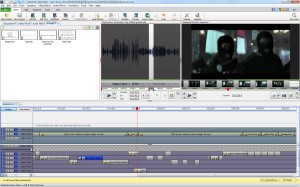Interviewee: Dr. Paul Conti, MD
Types of Trauma
- Acute
- Empathetic
Cascading Trauma
- How are we taking care of ourselves
- How are we speaking to each other
PRESCRIPTION for TRAUMA
- For Society – Take a step back and look at everything that is NOT about you. We tend to look at Society through the lens of ourselves (e.g. “What do I want?”). Go find somebody where your reflex is to think is nothing like you, THEN find the shared humanity (similarities)
- versus looking for differences (which leads to how, how are you going to work against me)
- –> Lighting you candle with mine does not diminish my own
- Looking at us at the aggregate of human beings that we truly are
- For Individual –
- Less News (Which doesn’t mean we need to be uninformed, but the clicking does damage)
- Reflect on what is going on inside of you (what are we saying over and over again in our heads…take stalk and talk to someone about it) & communicate it to someone you trust
- Be nice to someone today (makes a difference to someone, shows us that we’re not impotent, that we’re not powerless and vulnerable, reminds us of the good and power inside us)
- This doesn’t imply that we’re actively being mean, rather, we allowing ourselves to be vulnerable and have faith in ourselves that we have something to offer…that we can have a human connection even if its for a couple of seconds.
- Tendencies towards Depression…We can feel that we don’t have anything or enough to give to the world
Changes happen inside of us and it’s not the case that Trauma is “driving us off a cliff” – That we can takes steps to understand ourselves and be in the world in the way that we want to be
- Process of being reflective and intentional
- Process of simplifying (When things become too complicated, we stray from good mental health)
- Be healthy in ourselves and the world around us
If Trauma affects your level of self-awareness, how do we know or recognize the trauma and then address it as such?
- First step is to look inside ourselves — Self Observe, then generate Curiosity
- That person was saying over and over again how worthless they were — How is this impacting me?
- Not looking, keeps us under the Yolk of Trauma (e.g. Shame, if we look, it’s bad…keeps everything secret inside of us and then festers)
- Life is clearer, simpler, and overall better
- Look at the roots of what’s inside
- Ground to a sense of “self”
To live a good life…
- Be nice to ourselves
- Be nice to others
- Ground ourselves in the simple things we knew were true when we were younger
- Learn and help one another see that there’s goodness to anchor to



